 1992 BMW M8 Coupe Prototype (E31) Dimensions, Size & Specs
1992 BMW M8 Coupe Prototype (E31) Dimensions, Size & SpecsMeasurements of the 1992 BMW M8 Coupe Prototype, engineered for optimal performance and comfort
| Dimensions | |
|---|---|
| Length: | 4780 mm188.2 in15.7 ft |
| Width: | 1855 mm73.0 in6.1 ft |
| Height: | 1330 mm52.4 in4.4 ft |
| Weight Specifications | |
| Curb Weight: | 1443 kg3181 lbs |
| Tire Specifications | |
| Rims Sizes: | 17-inch rims:
|
| Tire Sizes: |
|
The BMW M8 Coupe Prototype (E31) from 1992 represents a rare and intriguing concept model in BMW's history, produced solely in that year. Measuring 4780 mm (188.2 inches) in length, 1855 mm (73 inches) in width, and 1330 mm (52.4 inches) in height, this coupe features proportions that emphasize both sleekness and aggressive presence. With a curb weight of 1443 kg (3,182 lbs), the prototype balances sporty weight with the structural rigidity expected in a high-performance vehicle. The M8 Coupe Prototype rides on wide rims sized 9J x 17 inches at the front and 8J x 17 inches at the rear, paired with tires sized 285/40 R17 at the front and 235/45 R17 at the rear, providing a substantial footprint and excellent road grip typical for a car designed for dynamic driving experiences. As a prototype, the E31 M8 showcases BMW's engineering direction and stylistic evolution during the early 1990s, combining bold design cues and an emphasis on performance coupe characteristics. Though it was never mass-produced, the BMW M8 Coupe Prototype stands as a testament to the brand's innovation and ambition in sculpting a top-tier luxury sports coupe during that era.
Discover the standout features that make the 1992 BMW M8 Coupe Prototype a leader in its class
Have a question? Please check our knowledgebase first.
The 1992 BMW M8 Coupe Prototype (E31) measures 4780 mm (188.2 inches) in length, 1855 mm (73 inches) in width, and has a height of 1330 mm (52.4 inches). These dimensions place it in the grand touring coupe category, combining a sleek profile with a spacious cabin footprint. The considerable length and width contribute to its road presence and stability, while its relatively low height enhances aerodynamic efficiency and a sporty stance.
The curb weight of the BMW M8 Coupe Prototype (E31) is 1443 kg (3,181 lbs). This relatively moderate weight for a high-performance grand tourer results from careful material selection and engineering optimization for a prototype vehicle. The curb weight influences acceleration, handling, and fuel efficiency, with the M8’s weight helping balance stability at high speeds with responsive maneuverability. A lighter vehicle would generally accelerate faster and handle better, but the M8's weight supports a blend of comfort and performance.
The BMW M8 Coupe Prototype (E31) features rim sizes of 9J x 17 inches at the front and 8J x 17 inches at the rear. The tire sizes mounted on these rims are 285/40 R17 for the rear and 235/45 R17 for the front. These wider rear tires provide enhanced traction and stability, crucial for powerful rear-wheel-drive performance cars. The combination of a wider rear tire with a narrower front one contributes to optimal handling balance and cornering grip.
The BMW M8 Coupe Prototype's dimensions—4780 mm (188.2 inches) long, 1855 mm (73 inches) wide, and 1330 mm (52.4 inches) tall—mean it generally fits within a typical single-car residential garage. Most standard garage doors are around 2.4 to 2.7 meters (about 7.9 to 8.9 feet) wide and 2 to 2.1 meters (6.5 to 6.9 feet) tall, providing sufficient clearance for the M8. However, the width of 1855 mm (73 inches) means tight lateral clearances, so care is recommended when entering or exiting narrow garages.
The BMW M8 Coupe Prototype (E31) shares similar dimensions with the standard BMW 8 Series (E31) produced at the time, as it is based on the same chassis platform. Both are approximately 4780 mm (188.2 inches) in length, 1850-1855 mm (72.8-73 inches) in width, and about 1330 mm (52.4 inches) in height. The M8’s prototype status means it likely includes performance-focused adjustments such as wider tires and possibly slightly different suspension tuning, but in terms of size, the M8 closely resembles the production 8 Series coupe.
Compared to contemporaries such as the Mercedes-Benz SL 600 (R129) or the Porsche 928 GTS, the BMW M8 Coupe Prototype (E31) is similar or slightly larger in length and width, emphasizing its grand touring character. For example, the Mercedes SL 600 measured around 4663 mm (183.5 inches) long and 1776 mm (69.9 inches) wide, making the M8 longer and wider. The Porsche 928 GTS measured about 4450 mm (175.2 inches) long and was narrower. Thus, the M8 offered a more substantial and road-dominant stance compared to many contemporary sports coupes.
While exact interior dimensions for the prototype BMW M8 Coupe (E31) are not detailed, it shares much of its interior space with the production 8 Series coupe, known for a relatively spacious and luxurious cabin given its coupe layout. The interior seats two to four passengers with front sports buckets and rear seating suitable for smaller adults or children. The relatively long wheelbase of the E31 platform gives decent legroom and comfortable shoulder room in front, though rear passenger space is more limited, typical of grand touring coupes.
The width of 1855 mm (73 inches) contributes to a wide track that improves cornering stability and reduces body roll. A wider stance offers better grip during high-speed maneuvers and enhances overall handling precision. The low height of 1330 mm (52.4 inches) lowers the center of gravity, which further improves handling by enhancing vehicle stability and reducing weight transfer during acceleration and cornering. Together, these dimensions give the M8 coupe agile, confident handling characteristics typical of a high-performance grand tourer.
As a prototype, the BMW M8 Coupe (E31) showcases unique features such as specially sized rims (9J x 17 and 8J x 17) and wider tires (up to 285/40 R17 rear) that are not typical of the standard BMW 8 Series. These design choices indicate an emphasis on enhanced grip and stability. The vehicle’s dimensions align closely with the production model, but subtle aerodynamic and suspension tweaks may exist to optimize performance and handling. As a prototype, it also served as a testing platform for technologies and design elements aimed at a potential M performance variant, which eventually came to fruition in later BMW M models.
Since the 1992 BMW M8 Coupe Prototype (E31) represents an evolution of the BMW 8 Series platform, it does not have a direct predecessor M8 generation prior to it; rather, it is an improved or concept version of the standard 8 Series coupe produced from 1989 to 1999. When compared dimensionally to earlier BMW high-performance coupes like the E24 M6 (produced until 1989), the M8 is longer at 4780 mm (188.2 inches) compared to around 4700 mm, and wider by roughly 50-60 mm, offering a larger footprint. Performance-wise, the prototype was aimed at delivering enhanced power and handling over the base 8 Series, representing BMW’s effort to create a true M version of the E31 platform.
Discover similar sized cars.
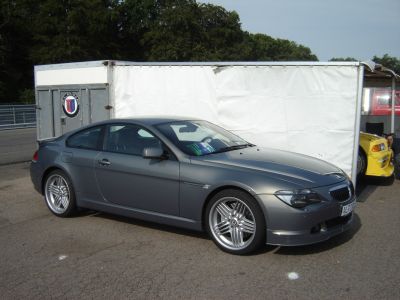
| Production: | 2005-2010 |
|---|---|
| Model Year: | 2006 |
| Length: | 4820 mm189.8 in |
| Width: | 1855 mm73.0 in |
| Height: | 1371 mm54.0 in |
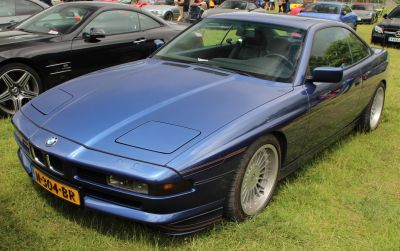
| Production: | 1990-1996 |
|---|---|
| Model Year: | 1990 |
| Length: | 4780 mm188.2 in |
| Width: | 1855 mm73.0 in |
| Height: | 1330 mm52.4 in |
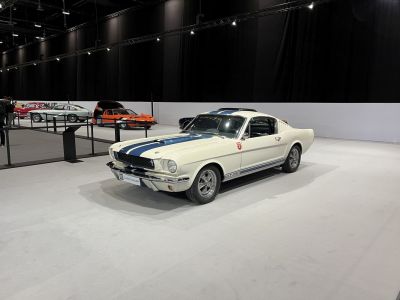
| Production: | 1965-1970 |
|---|---|
| Model Year: | 1965 |
| Length: | 4613-4740 mm181.6-186.6 in |
| Width: | 1306 mm51.4 in |
| Height: | 1300-1311 mm51.2-51.6 in |
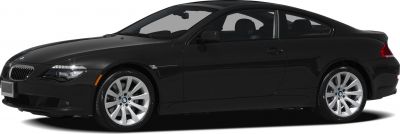
| Production: | 2007-2010 |
|---|---|
| Model Year: | 2007 |
| Length: | 4820 mm189.8 in |
| Width: | 2060 mm81.1 in |
| Height: | 1374 mm54.1 in |
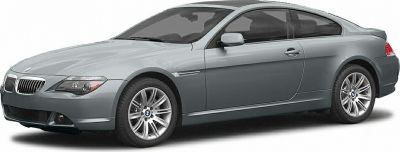
| Production: | 2003-2007 |
|---|---|
| Model Year: | 2003 |
| Length: | 4820 mm189.8 in |
| Width: | 1855 mm73.0 in |
| Height: | 1373 mm54.1 in |
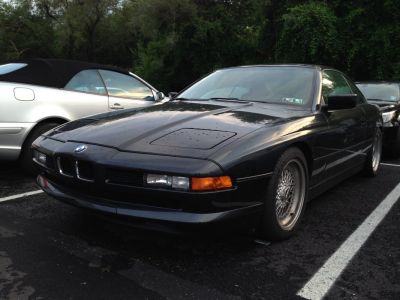
| Production: | 1989-1999 |
|---|---|
| Model Year: | 1989 |
| Length: | 4780 mm188.2 in |
| Width: | 2037 mm80.2 in |
| Height: | 1330-1340 mm52.4-52.8 in |
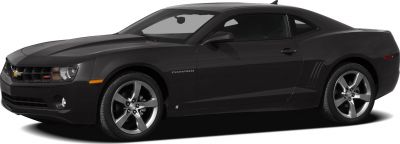
| Production: | 2009-2013 |
|---|---|
| Model Year: | 2010 |
| Length: | 4836 mm190.4 in |
| Width: | 1918 mm75.5 in |
| Height: | 1377 mm54.2 in |
